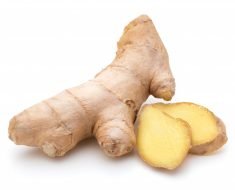Ruth asks This Morning doctor about milk helping arthritis
We use your sign-up to provide content in ways you’ve consented to and to improve our understanding of you. This may include adverts from us and 3rd parties based on our understanding. You can unsubscribe at any time. More info
Joint pain is a very common problem with many possible causes, but it’s usually a result of injury or arthritis, according to the NHS. If you have arthritis, it’s important to look after your joints to avoid further damage. Around 10 million people in the UK are thought to have arthritis and there are more than 100 types of arthritis and related conditions. The symptoms of arthritis can vary from week to week, so joint pain may come and go.
Versus Arthritis explains that a joint is where two or more bones meet, such as in the fingers, knees, and shoulders, and they hold bones in place and allow them to move freely within limits.
The most common type of arthritis is osteoarthritis. It is estimated that around 8.75 million people in the UK have seen a doctor about osteoarthritis, notes the charity.
Osteoarthritis initially affects the smooth cartilage lining of the joint. This makes movement more difficult than usual, leading to pain and stiffness.
“Sometimes, the early stages of osteoarthritis can happen without causing much pain or trouble. However, it can lead to damage inside a joint, as well as pain and stiffness,” it says.

In the UK, rheumatoid arthritis affects more than 400,000 people. In rheumatoid arthritis, the body’s immune system targets affected joints, which leads to pain and swelling.
Fortunately, there are some naturally occurring vitamins and supplements which may be able to help relieve joint pain.
The Arthritis Foundation recommends capsaicin or capsicum frutescens. It states: “Capsaicin temporarily reduces substance P, a pain transmitter.”
The organisation notes that its pain-relieving properties have been shown in many studies, including a 2010 study published in Phytotherapy Research, which revealed a 50 percent reduction in joint pain after three weeks of use.
The organisation says that it is best for osteoarthritis, but says it can also be used for rheumatoid arthritis and fibromyalgia.
The main goals of arthritis treatments are to reduce symptoms and to improve quality of life.
The Arthritis Foundation states: “Morning stiffness that lasts longer than an hour is good reason to suspect arthritis. Two other key signs are swelling and difficulty moving a joint.”
If you have arthritis, your joints will most likely feel stiff and be hard to move, you may also find that the area around your joints may feel warm, look red or puffy.

If you notice symptoms or are concerned about arthritis it is important to speak to your GP.
If the doctor suspects arthritis they will perform a range of tests to check the range of motion in your joints.
As well as causing pain and stiffness, inflammation can cause permanent damage to a joint, so starting effective treatment early on can help to minimise damage.
The NHS encourages those living with arthritis to eat a healthy and balanced diet and maintain a healthy weight.

It explains that diets should consist of a variety of foods from all five food groups.
The health body adds that you should include milk and dairy foods, and foods containing fat and sugar.
Some foods can actually trigger inflammation, so if you have an arthritis diagnosis it may be worth cutting these down in your diet.
Research suggests that processed foods, food with added sugars and red meats may cause inflammation.
Source: Read Full Article





